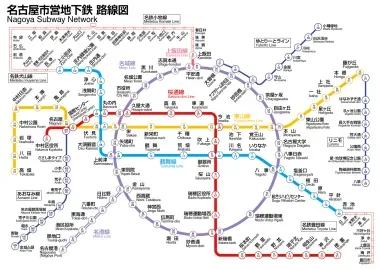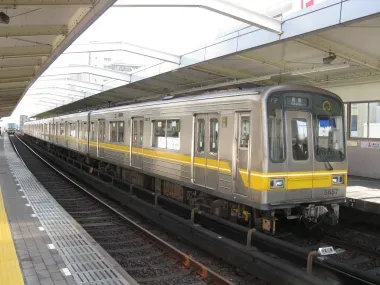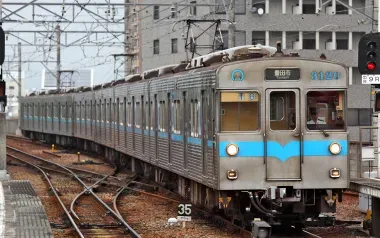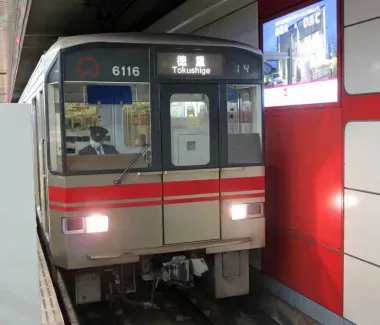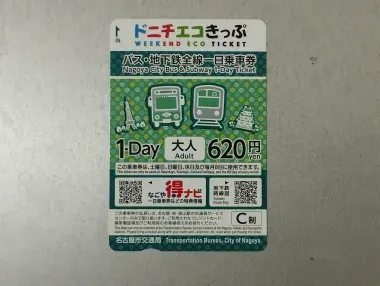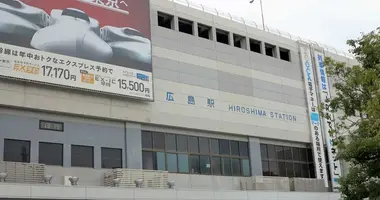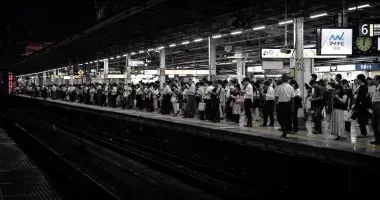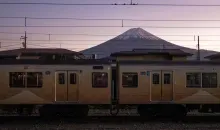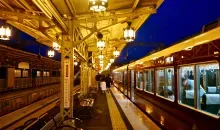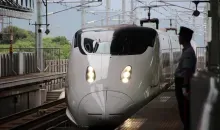Nagoya Subway
Nagoya subway guide: read a guide to Nagoya's subway system including information on Nagoya subway lines, fares, pre-paid cards and connecting stations.
Nagoya's subway system dates from 1958 and there are six lines: the Higashiyama Line (yellow), Meijo Line (purple), Meiko Line (two purple parallel lines), Tsurumai Line (blue), Sakura-dori Line (red) and Kamiiida Line (pink).
Nagoya Subway Connections
These lines intersect with other urban rail networks including Meitetsu Railways, JR, Kintetsu Railways, the Aonami Line and the Linimo maglev train, which runs east from Fujigaoka on the Higashiyama Line.
The main intersecting stations on the Nagoya subway are Nagoya Station, Kanayama Station, Imaike, Gokiso, Aratama-bashi, Motoyama, Yagoto and Sakae Station. Nagoya Station is also the main venue for accessing the city from other parts of the country, such as Tokyo, Osaka, and Kyoto, via the Tokaido-Sanyo Shinkansen Line.
Nagoya's loop line is the Meijo Line which connects the major stations of Kanayama, Kamimaezu, Motoyama and Yagoto. Fujigaoka is the connecting station for the Linimo and Heian-dori Station connects with the Kamiida Line and onwards to Inuyama. Kanayama, Chikusa and Ozone connect with the JR Chuo Line.
There are high speed Meitetsu express trains to Chubu International Airport from Nagoya Station (30 mins), Kanayama Station (25 mins) and Jingu-mae Station (a short walk from Temma-cho on the Meijo Line).
Jingu-mae Station on the Meitetsu Tokoname Line is also a short walk through Atsuta Jingu from Jingu Nishi on the Meijo Line. Jingu-mae Station has connections to Rinku Tokoname and Chubu International Airport on the Meitetsu Airport Line.
Ozone, Yada and Sunada-bashi stations on the Meijo Line connect with the guided bus Yutorito Line (Guideway Bus Shidami Line) out to Obata Ryokuchi and on.
Higashiyama Line
The Higashiyama Line, which is marked yellow on subway maps, extends 20.6km east to west from from Takabata (H01) in the south west of the city to Fujigaoka (H22) in Meito-ku in the north east where it connects with the Linimo, which runs 8 stops to Yakusa.
The Higashiyama Line (aka Nagoya City Rapid Railway Line 1 is the busiest line on the Nagoya subway network and connects Nagoya Station with the commercial and entertainment district of Sakae and runs through the traditional heart of historic Nagoya including the prosperous areas of Ikeshita, Kakuozan, Motoyama and Higashiyama Koen.
Parts of the Higashiyama Line first opened in 1957. The main interchange stations on the Higashiyama Line are Hatta, Nagoya Station, Fushimi, Sakae, Imaike, Motoyama, and Fujigaoka.
Meijo Line
The Meijo Line, which is marked purple on subway maps, is a circle or loop line, larger than the over ground Osaka Loop Line in Osaka but smaller than the Yamanote Line in Tokyo. The Toei Oedo Line in Tokyo is the only other subway loop line in Japan.
The journey time around the 26.4km, 28 station loop is 48 minutes.
Parts of the Meijo Line first opened in 1965 as Line 2. The full loop was completed in 2004 and the Kanayama Station to Nagoya Ko (Nagoya Port) section became the Meiko Line.

Meijo Line train Nagoya
@Japan Visitor
Meiko Line
The Meiko Line is a continuation of the Meijo Line and runs 6km from Kanayama Station to Nagoyako Station in the Nagoya Port district of the city.
There are seven stations on the Meijo Line Line. From Kanayama (E01) to Nagoyako (E07) they are: Kanayama, Hibino, Rokuban-cho, Tokai-dori, Minato Kuyakusho, Tsukiji-guchi and Nagoyako.
Tsurumai Line
The Tsurumai Line, which is marked blue on subway maps, extends 20.4 km east to west from from Kami Otai (T01) in the north west of the city to Akaike (T20) in Nisshin in the east.
The Tsurumai Line is a real work horse of the Nagoya metro as it funnels commuters and shoppers in to central Nagoya from the large dormitory towns of Inuyama and Toyota.
The Tsurumai Line continues from Akaike as the Meitetsu Toyota Line to Toyota. From Kami Otai the Tsurumai Line continues as the Meitetsu Inuyama Line to Inuyama.
Parts of the Tsurumai Line first opened in 1977. The main interchange stations on the Tsurumai Line are Fushimi (for Nagoya Station), Marunouchi, Kamimaezu (for Sakae), Gokiso and Yagoto.
Sakura-dori Line
The Sakura-dori Line, which is marked red on subway maps, extends 19km east to west from Nakamura Kuyakusho (S01) to Tokushige (S17) via Nagoya Station, Hisayaodori, Imaike, Gokiso and Aratama-bashi.
The journey time from Nagoya Station to Tokushige Station is 35 minutes.
Parts of the Sakura-dori Line first opened in 1989. The latest expansion was in 2011 when four new stations were constructed to extend the Sakura-dori Line from Nonami to Tokushige.
Kamiiida Line
The Kamiiida Line runs one stop from Heian-dori on the circular Meijo Line to Kamiiida with onward connections on the Meitetsu Komaki Line to Inuyama.
Nagoya Subway Passes
There are one-day passes available for the subway and for the subway and buses.
The Manaca IC Card is valid for the Nagoya subway, local buses, local Meitetsu trains and buses, the Aonami Line and from April 2012 local JR Tokai trains. The Manaca can also be used for shopping in selected convenience stores and other outlets. Collect points on your Manaca to become eligible for a variety of gifts or to use them to recharge your card.
The Do-nichi Eco Kippu is a pre-paid card for 620 yen available on Saturdays and Sundays and the 8th day of every month which gives unlimited travel for the day on subways and buses and reductions on admission to Nagoya's Science Museum, Higashiyama Zoo and Nagoya Castle.

